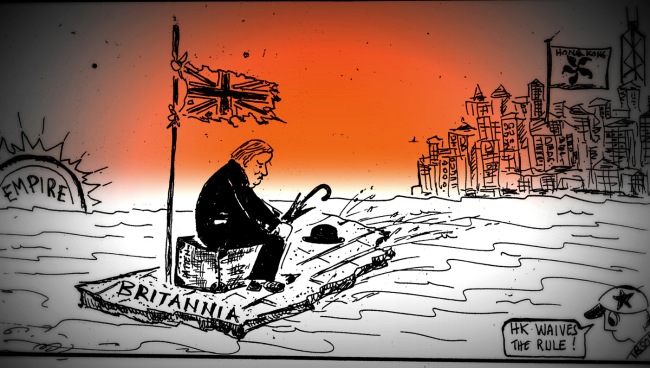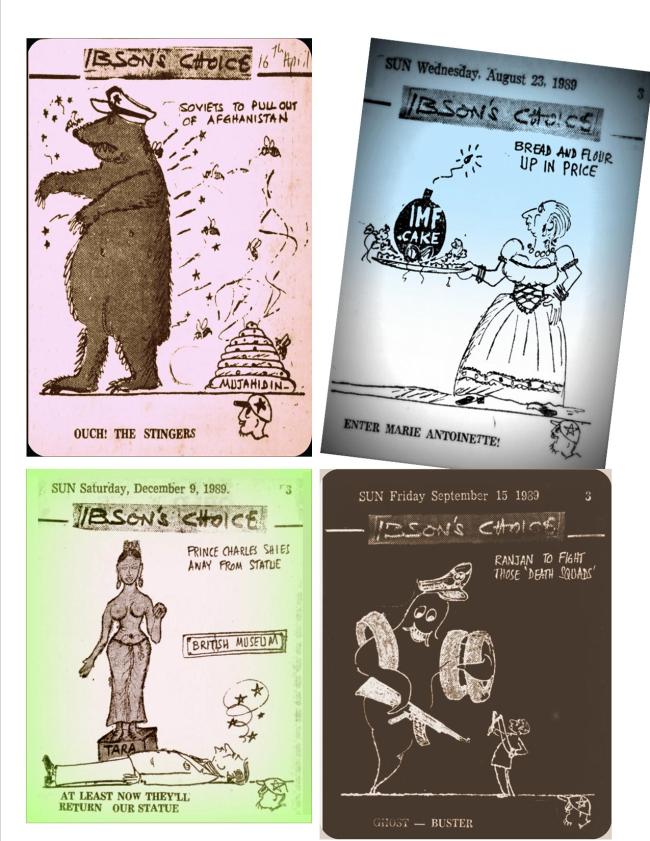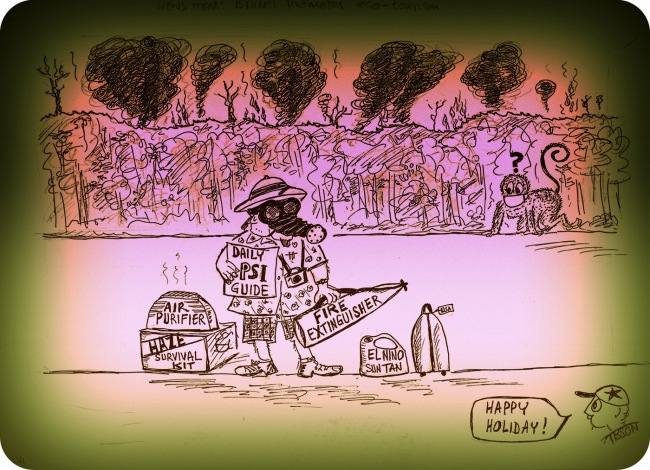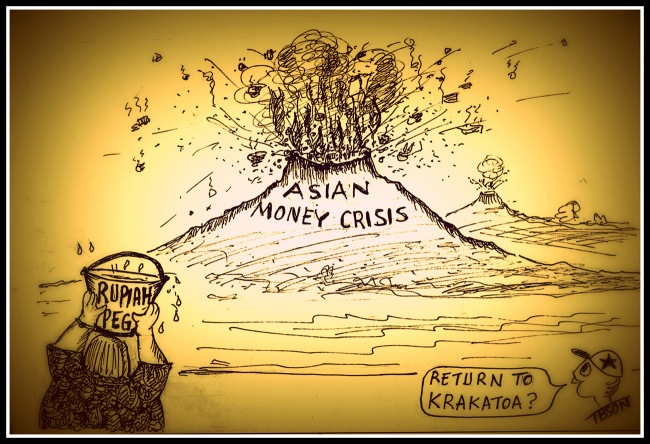PRINT MEDIA SINKING IN A DIGITAL FLOOD ?
Newspapers as we used to know are slowly but surely going extinct.
That’s old news in the West though it may not be breaking news in the East. Not as yet.
When print makes way to pixels, not necessarily by choice, its denizens too join the endangered lot.
Akin to the plight of Penguins and Polar Bears sitting despondently on melting icebergs as global warming takes its toll.
Among the first victims of this inevitable transformation are Editorial Cartoonists.
Some get laid off as their presses fold up, while others are compelled to seek refuge either in the Internet for a pittance or flip burgers for their daily bread.
It will be a crying shame to see them go the way of the Dino and the Dodo.
Down the years cartoonists in the print media have provided the ultimate acid test for the level of freedom that prevails in a given country. Cartoons they create act as barometers of democracy.
The enduring power of political cartoons helps to impact public opinion, expose hypocrisy and deflate the hubris of the powers that be.
The pitfalls are numerous too as the sinister and the powerful view the cartoonist as bête noire. According to popular American humorist the late Art Buchwald, dictators both Right and Left fear political cartoonists more than they do the Atom Bomb.
During the Second World War, the dreaded Gestapo had London based cartoonist David Low on their hit list for lampooning Adolf Hitler.
Some have paid with their life. Among them Palestinian cartoonist Naji Salim killed outside his London office two decades ago.
Quite recently a Syrian cartoonist Ali Ferzat got his arms broken allegedly by the militia while in India cartoonist Aseen Trivedi, who frequently exposed corruption in public life, faced legal action. Meanwhile a Sri Lankan cartoonist Eknaligoda is reportedly ‘missing’ for well over two years.
The vital place editorial cartoonists enjoyed in the print media is fast disappearing. Not only due to shut downs preceded by shrinking readership, but also due to censorship, draconian press laws and deceptive action of spin doctors and code-peddlers.
Gone are the days when cartoonists could skewer the arrogant and ridicule the unjust with caricatures when words were too risky and open for legal vulnerabilities.
Cartoonists and their editors should know when and where to draw the line as they use this confrontational yet persuasive art form to mold public opinion.
It could therefore be a daunting challenge to walk the fine line so as to promote social justice while upholding freedom of expression.
I have had my fair share of “cartoon capers “in the print media: Some of it hilarious in their own right whiles others decidedly not.
During my first year as the expatriate Editor of Brunei’s leading newspaper Borneo Bulletin, the former Chief of Police demanded explanation why we ran a canine looking caricature depicting the traffic policemen. He demanded an explanation pronto with a letter hand delivered to my office by two officers.
The ‘offensive’ cartoon depicted a policeman with a long nose akin to a snout inspecting motorists. This apparently infuriated some top brass where dogs are considered unclean in local culture.
To my utter dismay the cartoonist held his ground insisting that the drawing was aptly depicted in the way it was.
But when I asked if that snouty cop could also look like a crocodile the cartoonist responded in the affirmative.
So as the officers waited impatiently, I wrote in to the Chief to say that the face resembled that of a croc and not a dog.
It was not the end of the story though the Chief did not pursue the matter further.
Calling a man a crocodile there is a grievous insult which I did not know at the time, though the cheeky local cartoonist was fully cognizant of.
In the early seventies I got away with a fine, escaping jail time in Sri Lanka for publishing a cartoon in the now defunct Weekend when cartoonist Janaka drew some policemen giving the third degree chili bag treatment to a suspect.
The Criminal Justice Commission (CJC) set up to try suspects of JVP revolt found the cartoon to be in contempt of court.
The cartoonist missed out 3 words that made the publication culpable. Instead of writing CJC Act and all that he missed out the word “Act” which made the then Justice Minister angry prompting legal action.
One funny yet engaging episode deals with the distinctive ire of former Sri Lankan President JR Jayewardene who threatened to close our newspaper down when our cartoonist Gerreyn caricatured him holding the tail of the devil dousing the fires of Tamil Tiger terror.
The cartoonist based the humor on an interview JR gave on his decision to obtain Israeli military help to fight the Tigers. He reportedly said he would even get the devil’s help to fight terrorism.
But what made the President angry was when his Information Chief pointed out that Satan was drawn to look nicer than JR in that cartoon.
The ‘old fox’ as he was popularly called, later cooled down.
Instead following up his initial threat he introduced laws that required cartoons also to be censored under Emergency Regulations. Before that episode cartoonists enjoyed media’s indispensable freedom to lampoon.
Few years later when our cartoonist Amitha was enticed join another rival newspaper, leaving a hole in the page3 of the SUN I stepped in to create Ibson’s Choice. (BELOW: Few Ibson cartoons from my Archives)





